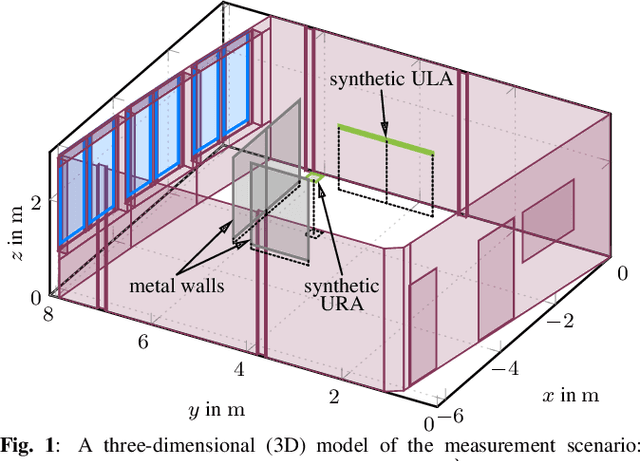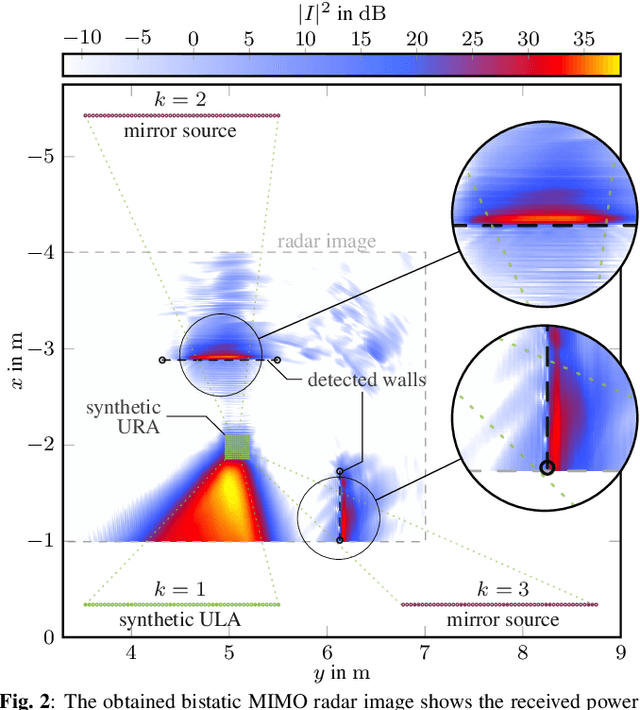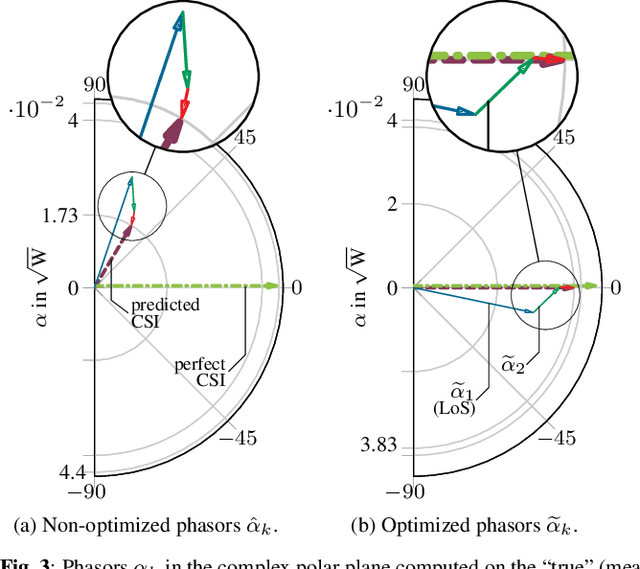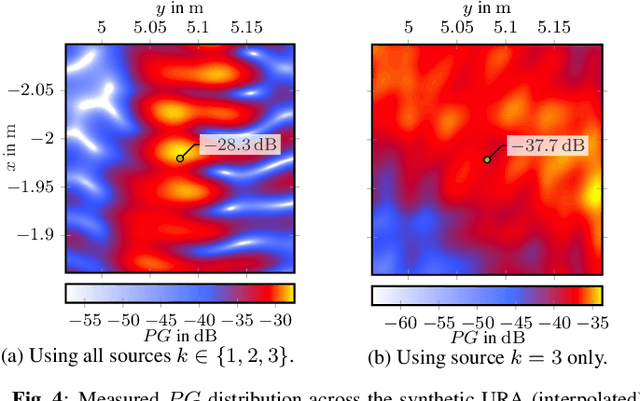Maximilian Graber
Bistatic MIMO Radar Sensing of Specularly Reflecting Surfaces for Wireless Power Transfer
May 08, 2023



Abstract:Geometric environment information aids future distributed radio infrastructures in providing services, such as ultra-reliable communication, positioning, and wireless power transfer (WPT). An a priori known environment model cannot always be assumed in practice. This paper investigates the capabilities of detecting specularly reflecting surfaces in a bistatic multiple-input multiple-output (MIMO) radar setup operating at sub-10 GHz frequencies. While rough surfaces generate diffuse reflections originating from their actual position, flat surfaces act like "mirrors," causing directive reflections that virtually originate "behind" them. Despite these propagation characteristics, we can estimate the locations of flat metal walls from reflections at their surface using synthetic aperture (SA) measurements. The performance gain achievable by exploiting this environment information is analyzed by evaluating WPT capabilities in a geometry-based beamforming setup. We show that it is possible to predict channel state information (CSI) with a geometric channel model. Our geometry-based beamformer suffers an efficiency loss of only 1.1dB compared with a reciprocity-based beamformer given perfect CSI.
XL-MIMO Channel Modeling and Prediction for Wireless Power Transfer
Feb 23, 2023Abstract:Massive antenna arrays form physically large apertures with a beam-focusing capability, leading to outstanding wireless power transfer (WPT) efficiency paired with low radiation levels outside the focusing region. However, leveraging these features requires accurate knowledge of the multipath propagation channel and overcoming the (Rayleigh) fading channel present in typical application scenarios. For that, reciprocity-based beamforming is an optimal solution that estimates the actual channel gains from pilot transmissions on the uplink. But this solution is unsuitable for passive backscatter nodes that are not capable of sending any pilots in the initial access phase. Using measured channel data from an extremely large-scale MIMO (XL-MIMO) testbed, we compare geometry-based planar wavefront and spherical wavefront beamformers with a reciprocity-based beamformer, to address this initial access problem. We also show that we can predict specular multipath components (SMCs) based only on geometric environment information. We demonstrate that a transmit power of 1W is sufficient to transfer more than 1mW of power to a device located at a distance of 12.3m when using a (40x25) array at 3.8GHz. The geometry-based beamformer exploiting predicted SMCs suffers a loss of only 2dB compared with perfect channel state information.
 Add to Chrome
Add to Chrome Add to Firefox
Add to Firefox Add to Edge
Add to Edge